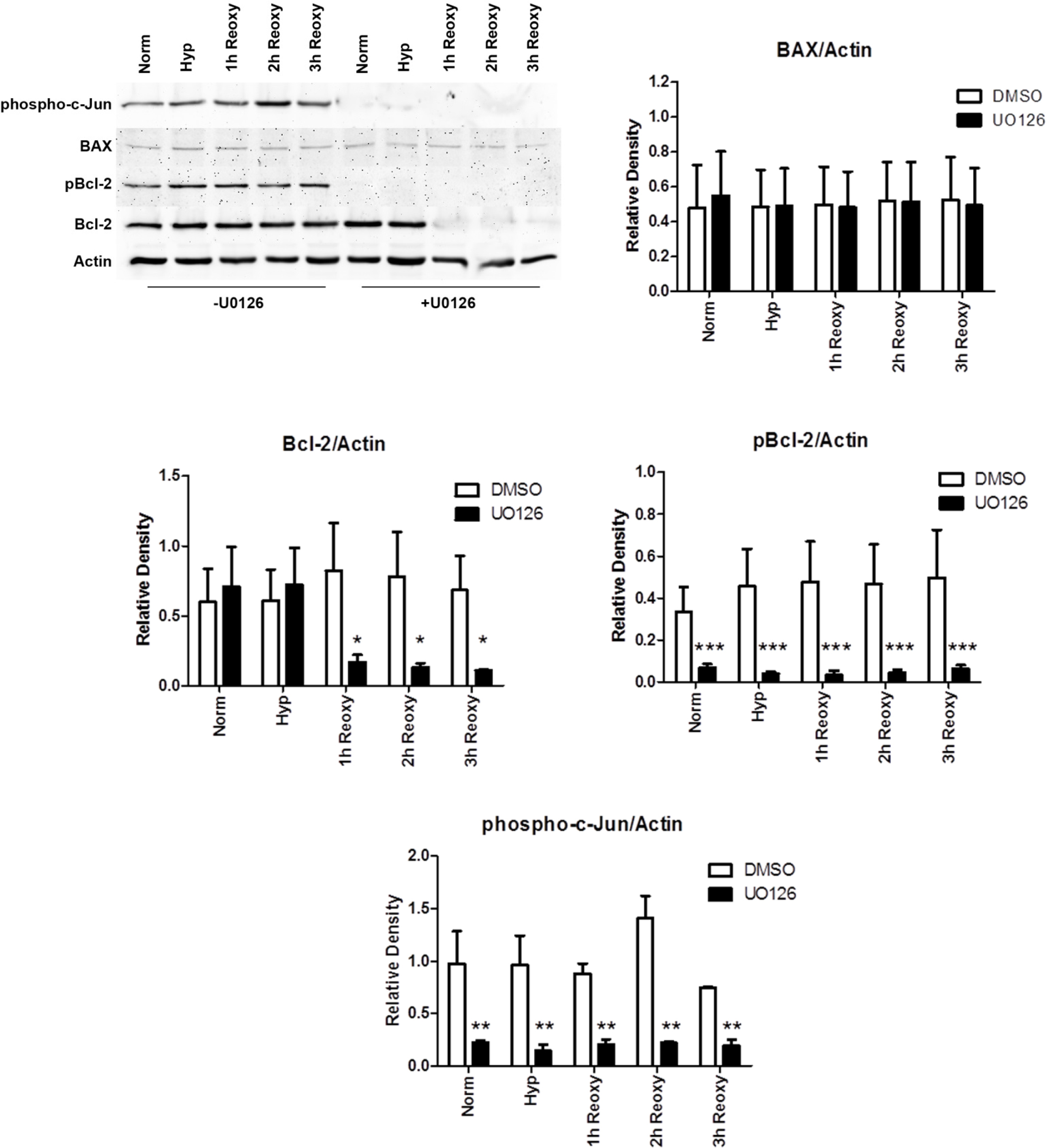Figure 5. Western blot analysis of BAX, Bcl-2, pBcl-2, and phospho-c-Jun in HLE-B3 cells in the presence or absence of UO126. Total
cell lysates were collected from >85% confluent human lens epithelial (HLE-B3) cell cultures that were incubated for 90 min
in serum-free minimal essential media (MEM), under conditions of atmospheric oxygen, containing either 10 µM UO126 or 0.05%
DMSO vehicle. Cells were then exposed to hypoxia for 3 h in the continuous presence of UO126 or DMSO vehicle. At the end of
the hypoxic incubation period, the hypoxic media were removed, and fresh, oxygenated serum-free MEM with UO126 or DMSO were
added to the cultures. Cells were then placed in atmospheric oxygen for up to 3 h in the presence or absence of SB216763.
Cultures were collected after (1) continuous normoxic exposure (about 21% oxygen), (2) after the 3 h hypoxic exposure (about
1% oxygen), or (3) after reintroduction of atmospheric oxygen (about 21%) for 1, 2, or 3 h subsequent to the 3 h hypoxic exposure.
Total cell lysates were analyzed with immunoblots using 25 µg of protein per lane. Anti-actin was used to normalize the bands
to ensure equivalent lane loading. Three experiments, using independent cell populations, were quantified using GraphPad Prism
5. (top panel, left) The phosphorylation of c-Jun, as well as that of Bcl-2, was blocked by treatment with UO126 under all
conditions as determined with western blot analysis. Interestingly, Bcl-2 levels were significantly diminished with treatment
by UO126 but only upon reintroduction to atmospheric oxygen. (top panel, right) No change in relative density of the ratio
of BAX/actin was evident by treatment with UO126 under any condition. Error bars represent standard error. (middle panel,
left) A significant drop in Bcl-2 levels was noted but only upon reintroduction of atmospheric oxygen for the 1, 2, and 3
h incubation periods. The asterisk (*) indicates p<0.05, Student
t test. (middle panel, right) A significant loss of pBcl-2 was noted under all conditions (continuous atmospheric oxygen, continuous
hypoxia, and reintroduction from hypoxia to atmospheric oxygen). The asterisks (***) indicate p<0.001, Student
t test. (bottom panel) Unlike with SB216763 (refer to
Figure 4), treatment with UO126 resulted in a marked decrease in the phosphorylation of c-Jun, indicating that UO126 adversely affects
JNK activity. The asterisks (**) indicate p<0.01, Student
t test.
 Figure 5 of
Brooks, Mol Vis 2013; 19:2451-2467.
Figure 5 of
Brooks, Mol Vis 2013; 19:2451-2467.  Figure 5 of
Brooks, Mol Vis 2013; 19:2451-2467.
Figure 5 of
Brooks, Mol Vis 2013; 19:2451-2467. 